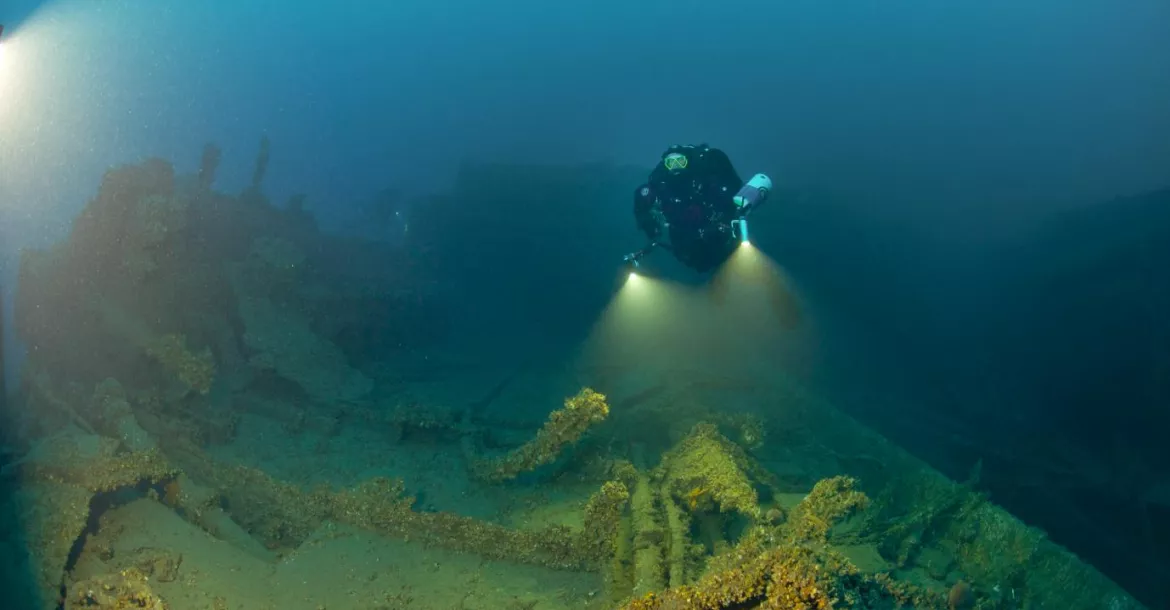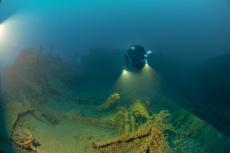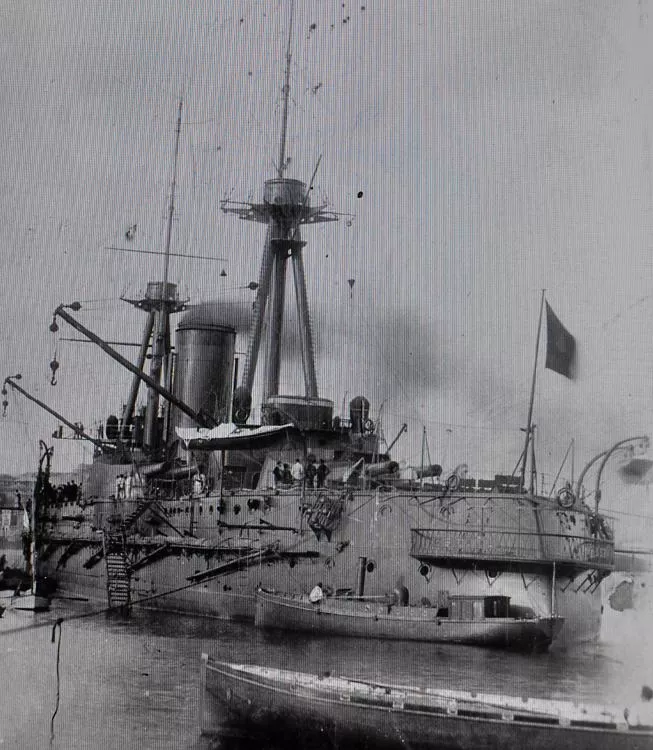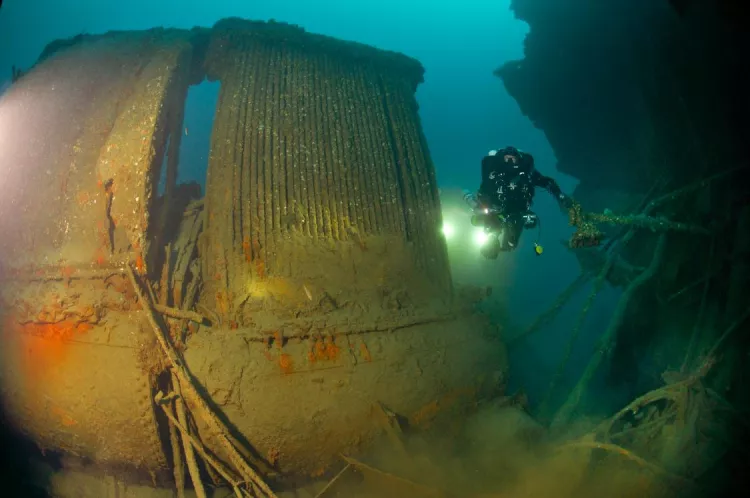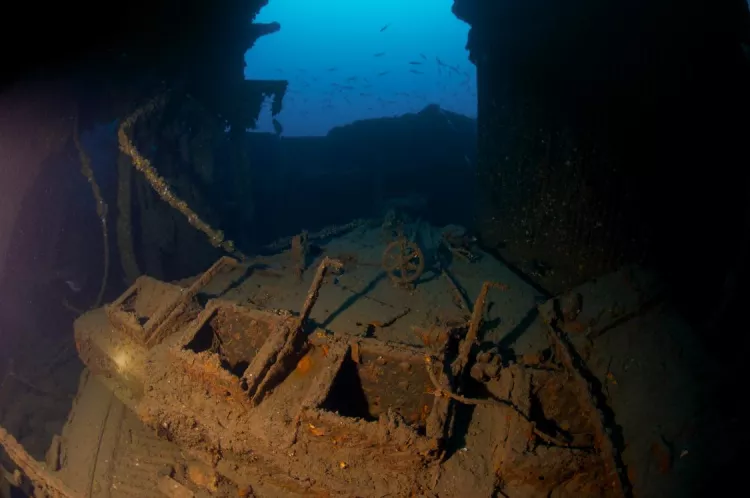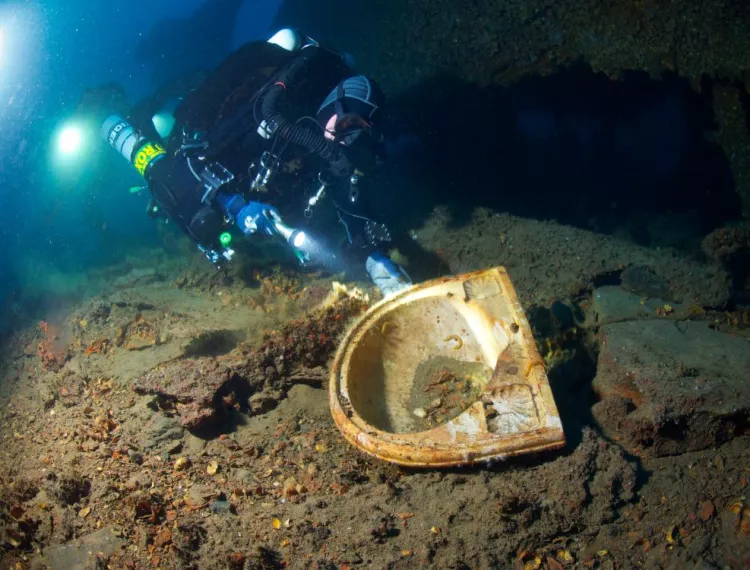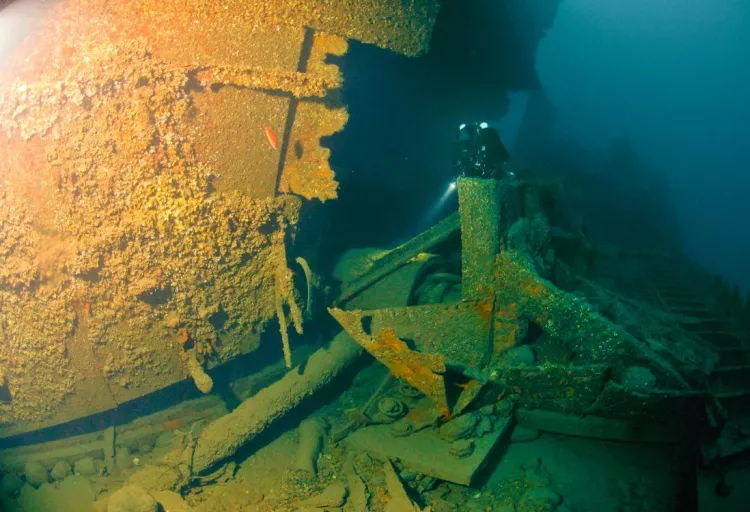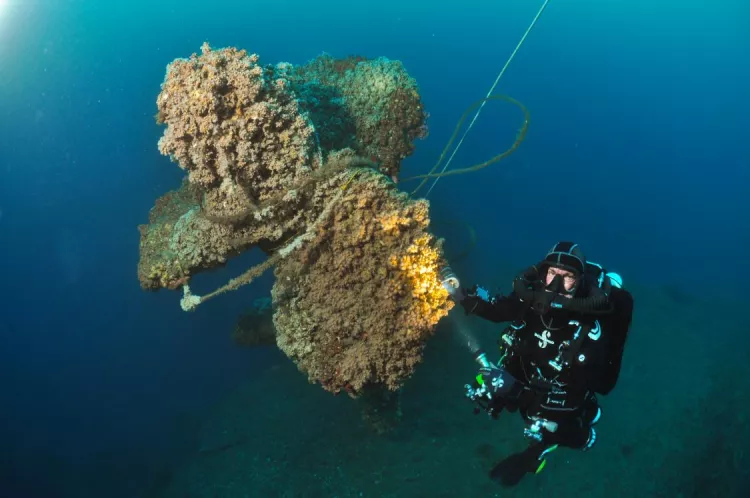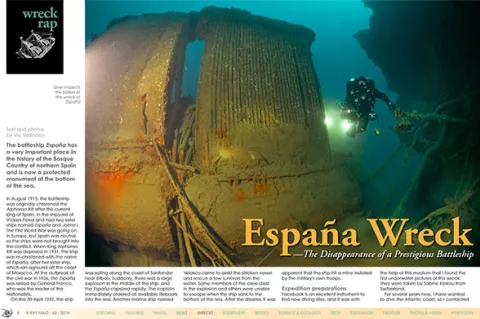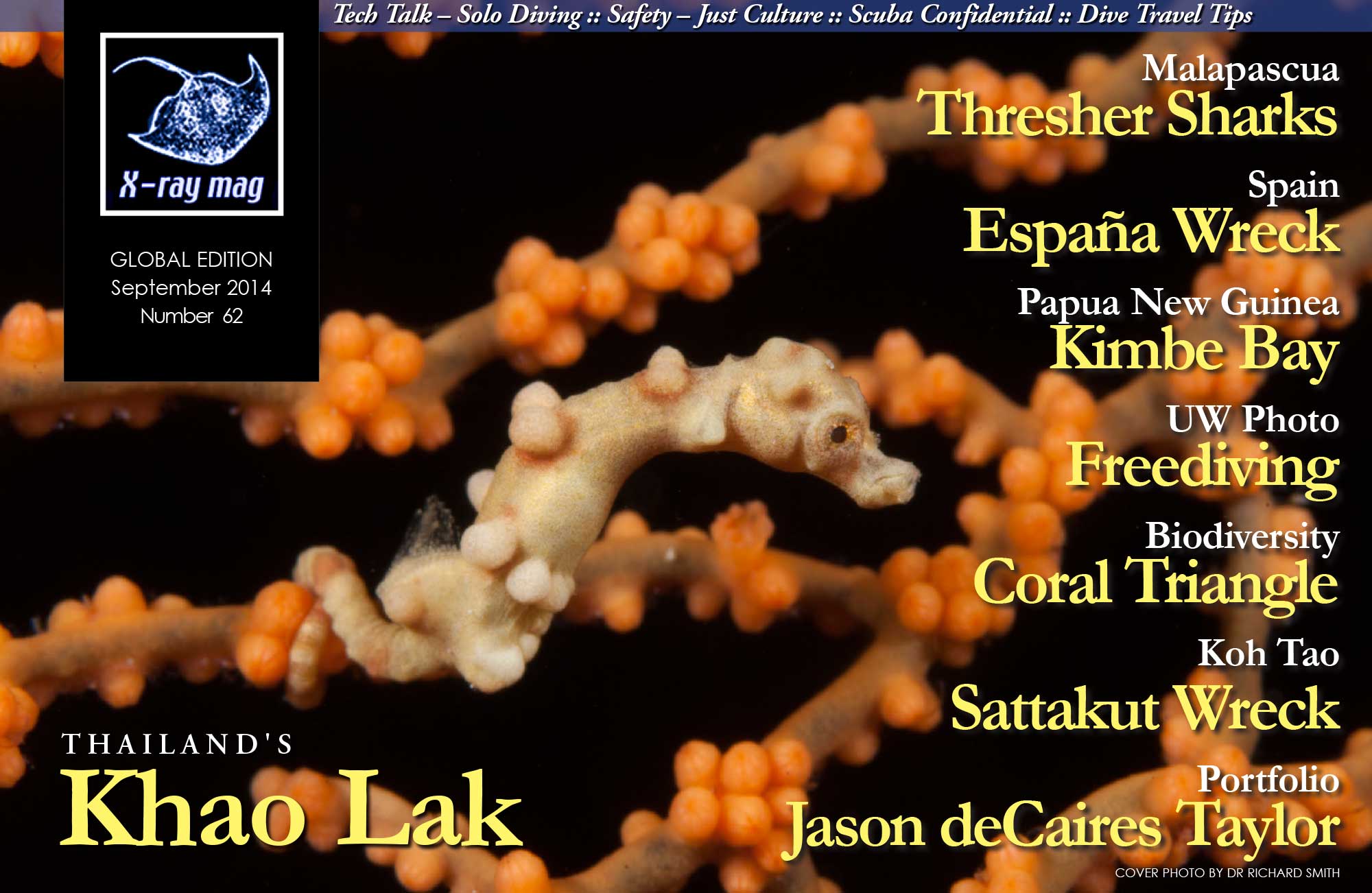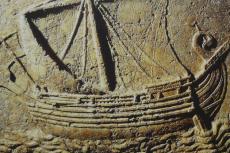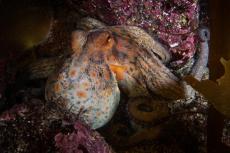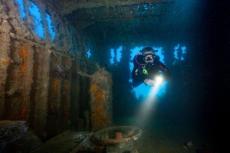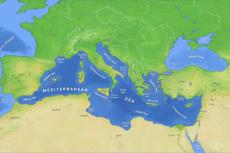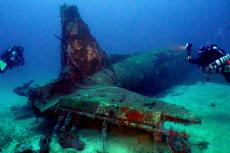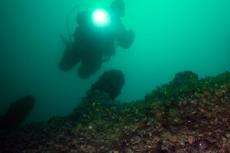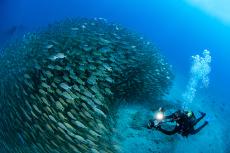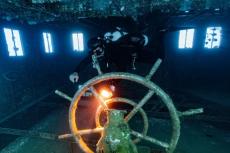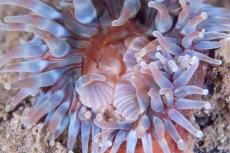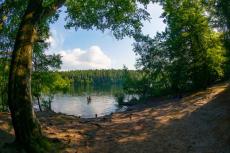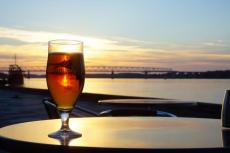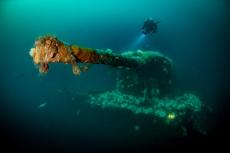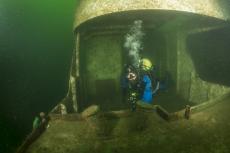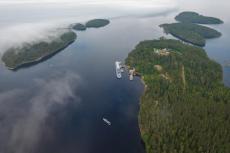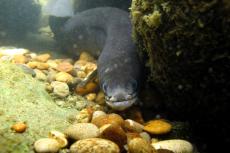The battleship España has a very important place in the history of the Basque Country of northern Spain and is now a protected monument at the bottom of the sea.
Contributed by
Factfile
The España
Owner: Spanish Navy
Builders: Vickers Ferrol Dockyard 1912
Type: Battleship / Cruiser
Tonnage: 15,254 tons
Length: 140m
Width: 26m
Propulsion: Turbine motors, 3 propellers
Speed: 20 knots
In August 1915, the battleship was originally christened the Alphonso XIII after the current king of Spain, in the shipyard of Vickers-Ferrol and had two sister ships named España and Jaime I. The First World War was going on in Europe, but Spain was neutral, so the ships were not brought into the conflict.
When King Alphonso XIII was deposed in 1931, the ship was re-christened with the name of España, after her sister ship, which ran aground off the coast of Morocco. At the outbreak of the civil war in 1936, the España was seized by General Franco, who was the leader of the Nationalists.
On the 30 April 1937, the ship was sailing along the coast of Santander near Bilbao. Suddenly, there was a large explosion in the middle of the ship, and the España capsized rapidly. The captain immediately ordered all available lifeboats into the sea.
Another marine ship named Velasco came to assist the stricken vessel and rescue a few survivors from the water. Some members of the crew died in the explosion and others were unable to escape when the ship sank to the bottom of the sea. After the disaster, it was apparent that the ship hit a mine installed by the military's own troops.
Expedition preparations
Facebook is an excellent instrument to find new diving sites, and it was with the help of this medium that I found the first underwater pictures of this wreck. They were taken by Sabine Kerkau from Switzerland.
For several years now, I have wanted to dive the Atlantic coast, so I contacted Kerkau right away. She said she would be returning to Spain in a few months to do more dives on the wreck, and said I could come along and join their group.
The problem for me, with diving in this neighbourhood, was the language. Almost nobody speaks foreign languages there, and I did not speak Spanish. Happily, Kerkau could contact somebody on the spot who spoke English. This was Alberto Marin, a tech diver and all-around nice guy, who would accompany me during the test dive on a wreck at a lesser depth than España.
We agreed to make the trip in August when there were more chances for good weather. Sometimes the ocean can be wild around Bilbao, with stormy seas. It is impossible then to get the boat out and go diving.
After a ride of more than 1,300km, we finally arrived at the city of Laredo. This inshore city has a marvellous sandy beach and is visited by a lot of Spanish tourists during the summer holidays.
Genovieva Fierro test dive
After a good night’s rest, it was time to meet my dive buddy and the owner of the diving centre. Joseba Alberto, who has made of Mundo Submarino a modern dive centre with all the resources necessary for technical diving. After a friendly welcome, we met up with Marin, who would accompany me during the dive.
The first dive was planned for that afternoon, so we immediately began to prepare our gear. We expected a depth of about 55 meters on the wreck and prepared our gasses for these specifications. The first dive to a new destination is always carefully planned, so I concentrated my attention on my task of setting up the rebreathers.
The wreck we were diving this time was a freighter that sank during the Second World War. The wreck rested at a depth of 55m and was quite intact. Because it stood upright on the seafloor, we had no difficulties exploring the entire wreck. We could easily recognize the winches that activated the different cranes as well as a part of the ship's structure.
My rebreather was working perfectly during the dive and so I was sure I would be ready for our dives on the España. As my buddy, Alberto, had an excellent dive, too, we planned the dive on the España for the following day. Of course, we hoped for good weather to enable our long trip on the dive boat to the wreck.
Exploration of captain’s cabin
Fortunately, the weather was excellent when we met at the dive centre as planned. We took the necessary time to set up and test all our equipment again. The España lies at a depth of 70m, so we could not run the risk of any faulty gear. Luckily, when we cast anchor at the wreck, the sun was shining and there was a light breeze.
For this dive, I was placed with a group of three composed of myself, Marin and Kerkau, who came by plane from Switzerland especially for this dive. Marin cast the grapnel near the stern of the wreck, as it was our intention to explore this part of the ship.
Going down I noticed that the visibility was more than 15m. At 50m we saw the shadow of the wreck becoming visible right under us. Because the ship turned over under the weight of her guns during the sinking, I was able to see one of the big propellers distinctly when I hovered over the hull.
After a quick check of equipment with my buddy, we descended further along the side of the hull. The hull was more damaged at this point, and we could also make out a pile of artillery shells. It was obvious that this was one of the ammunition rooms and that the shells were used for the large guns.
Near the bottom, there was a hole in the hull. I decided to swim inside and have a quick look because I suspected that it was probably the captain’s cabin. Inside the wreck, everything was turned over upside down, so I could only recognize a washbasin and a toilet. At this depth, there was, of course, not much time to linger, so after one more little turn around the propellers, we decided to ascend to the surface.
140m-wide seamens’ grave
The next day we conferred with the group about the dive plan for the day and decided to explore the mid-section of the ship. Arriving on location, we found the anchor was still placed near the propellers, but when we got to the wreck, we immediately turned to head north.
The hull was more damaged here, and we could distinctly see the Yarrow boilers. A few meters further, there was also an intact copper pump screwed up against the side of the ship. When we arrived near the middle of the wreck, we saw a passage that allowed us to swim to the other side. Here, we found the large turret of the gun battery sitting on its side on the wreck. We also saw one of the smaller 100mm guns against the sidewall.
The visibility was even better today, and in some places, it was almost 20 meters. We decided to swim back in the direction of the stern of the ship so that we would not be too far away from the anchor line for the ascent to the surface. After a signal from my buddy, I sent my deco buoys to the surface and began the long decompression. This was only a little sacrifice for the magnificent dives on this unique wreck. I will certainly come back! ■
Having dived over 400 wrecks, Vic Verlinden is an avid, pioneering wreck diver, award-winning underwater photographer and dive guide from Belgium. His work has been published in dive magazines and technical diving publications in the United States, Russia, France, Germany, Belgium, United Kingdom and the Netherlands. He is also the organizer of tekDive-Europe technical dive show. For more info, visit: www.vicverlinden.com

